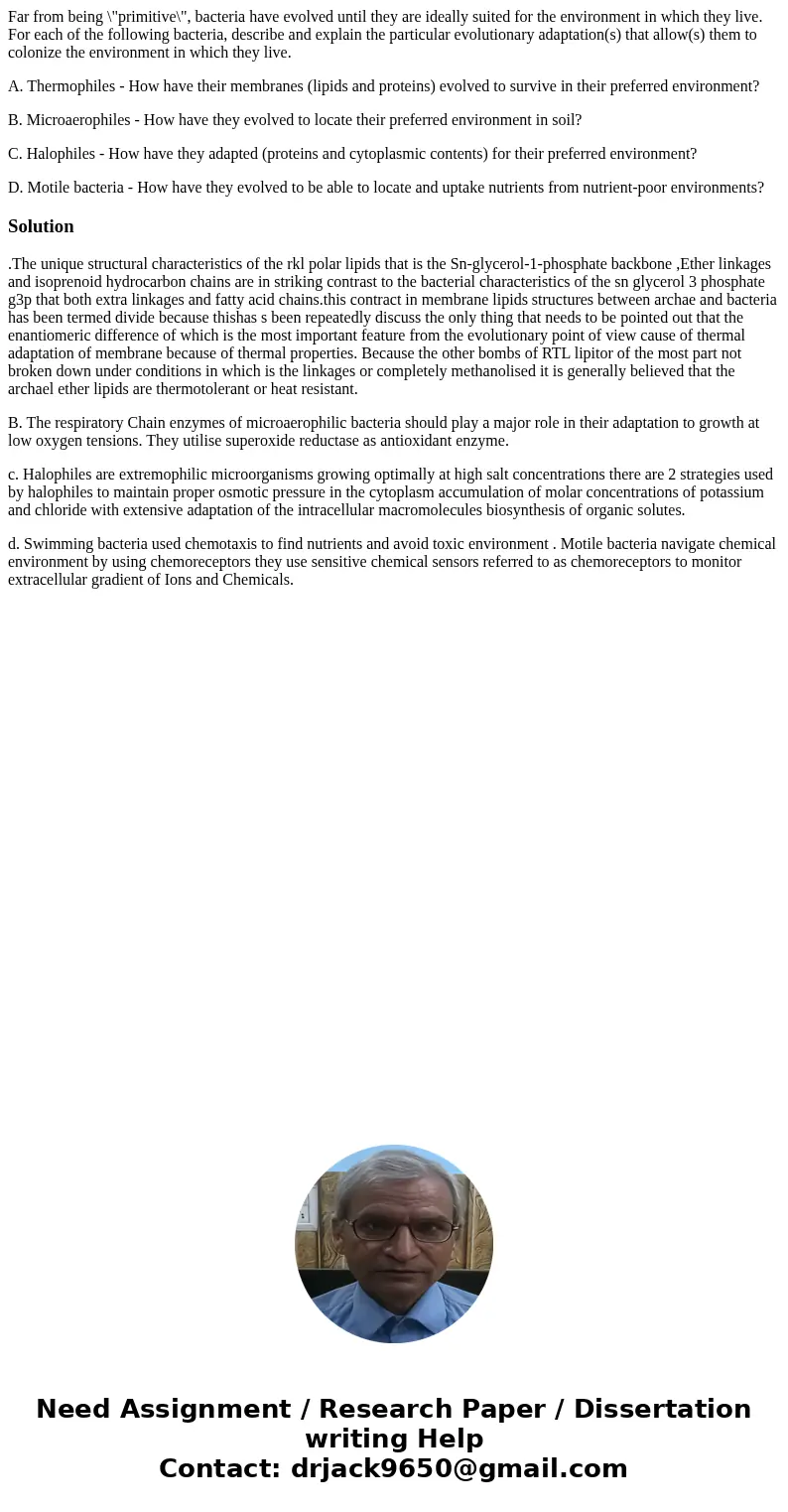Far from being primitive bacteria have evolved until they ar
Far from being \"primitive\", bacteria have evolved until they are ideally suited for the environment in which they live. For each of the following bacteria, describe and explain the particular evolutionary adaptation(s) that allow(s) them to colonize the environment in which they live.
A. Thermophiles - How have their membranes (lipids and proteins) evolved to survive in their preferred environment?
B. Microaerophiles - How have they evolved to locate their preferred environment in soil?
C. Halophiles - How have they adapted (proteins and cytoplasmic contents) for their preferred environment?
D. Motile bacteria - How have they evolved to be able to locate and uptake nutrients from nutrient-poor environments?
Solution
.The unique structural characteristics of the rkl polar lipids that is the Sn-glycerol-1-phosphate backbone ,Ether linkages and isoprenoid hydrocarbon chains are in striking contrast to the bacterial characteristics of the sn glycerol 3 phosphate g3p that both extra linkages and fatty acid chains.this contract in membrane lipids structures between archae and bacteria has been termed divide because thishas s been repeatedly discuss the only thing that needs to be pointed out that the enantiomeric difference of which is the most important feature from the evolutionary point of view cause of thermal adaptation of membrane because of thermal properties. Because the other bombs of RTL lipitor of the most part not broken down under conditions in which is the linkages or completely methanolised it is generally believed that the archael ether lipids are thermotolerant or heat resistant.
B. The respiratory Chain enzymes of microaerophilic bacteria should play a major role in their adaptation to growth at low oxygen tensions. They utilise superoxide reductase as antioxidant enzyme.
c. Halophiles are extremophilic microorganisms growing optimally at high salt concentrations there are 2 strategies used by halophiles to maintain proper osmotic pressure in the cytoplasm accumulation of molar concentrations of potassium and chloride with extensive adaptation of the intracellular macromolecules biosynthesis of organic solutes.
d. Swimming bacteria used chemotaxis to find nutrients and avoid toxic environment . Motile bacteria navigate chemical environment by using chemoreceptors they use sensitive chemical sensors referred to as chemoreceptors to monitor extracellular gradient of Ions and Chemicals.

 Homework Sourse
Homework Sourse